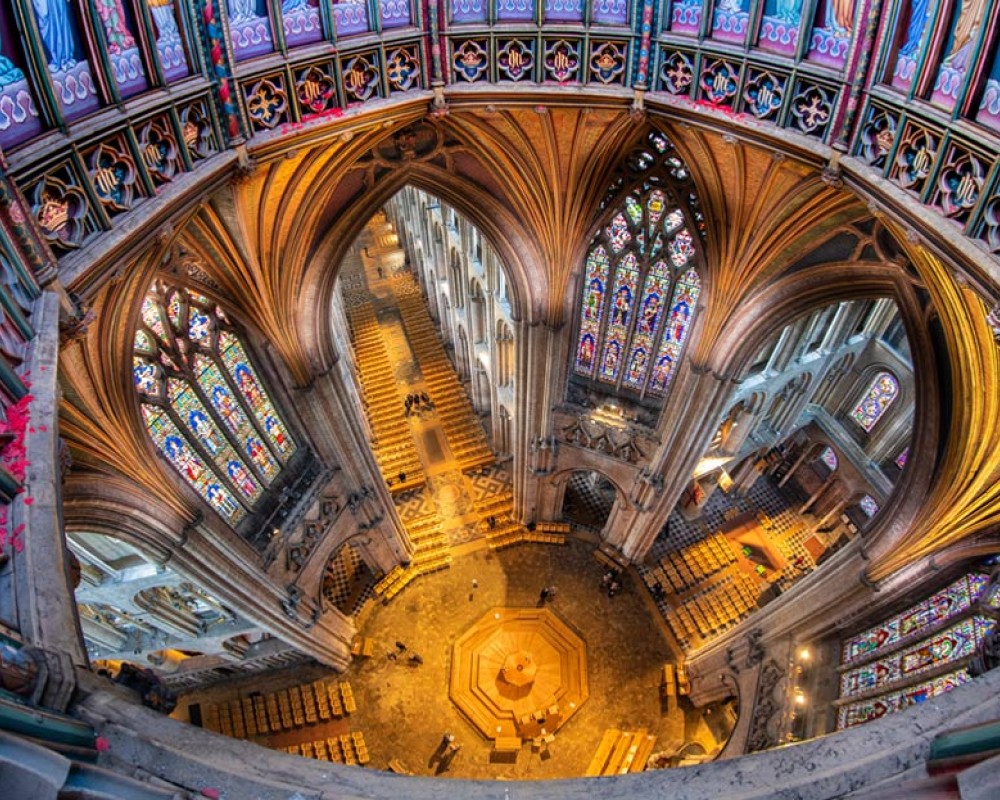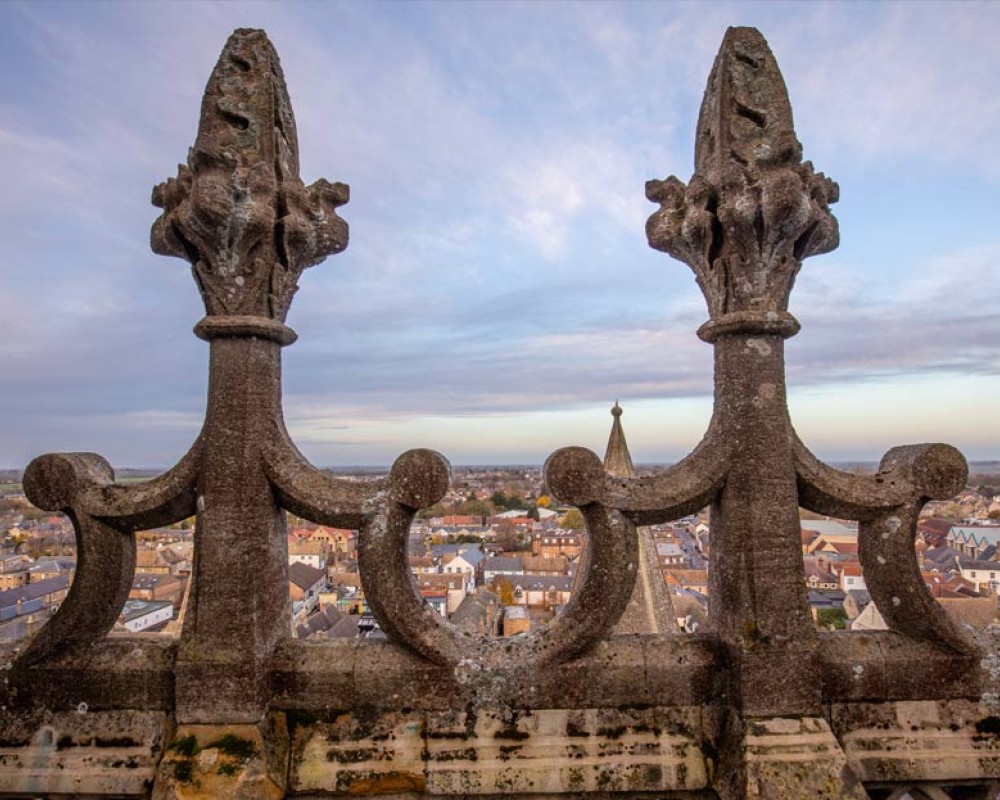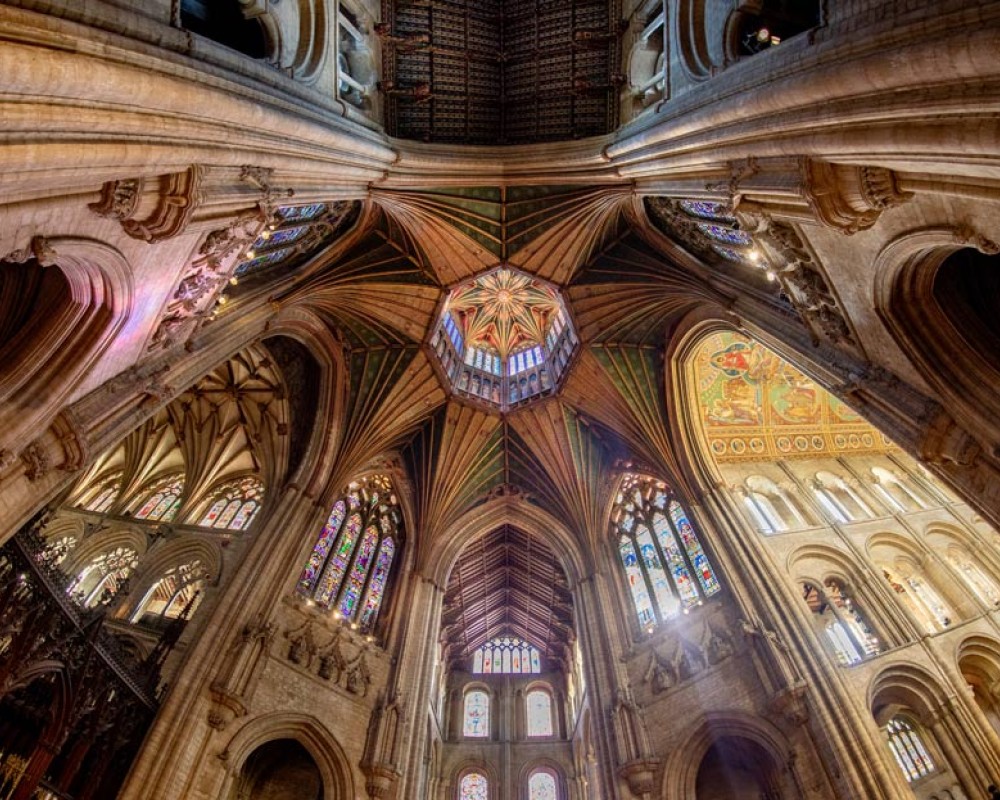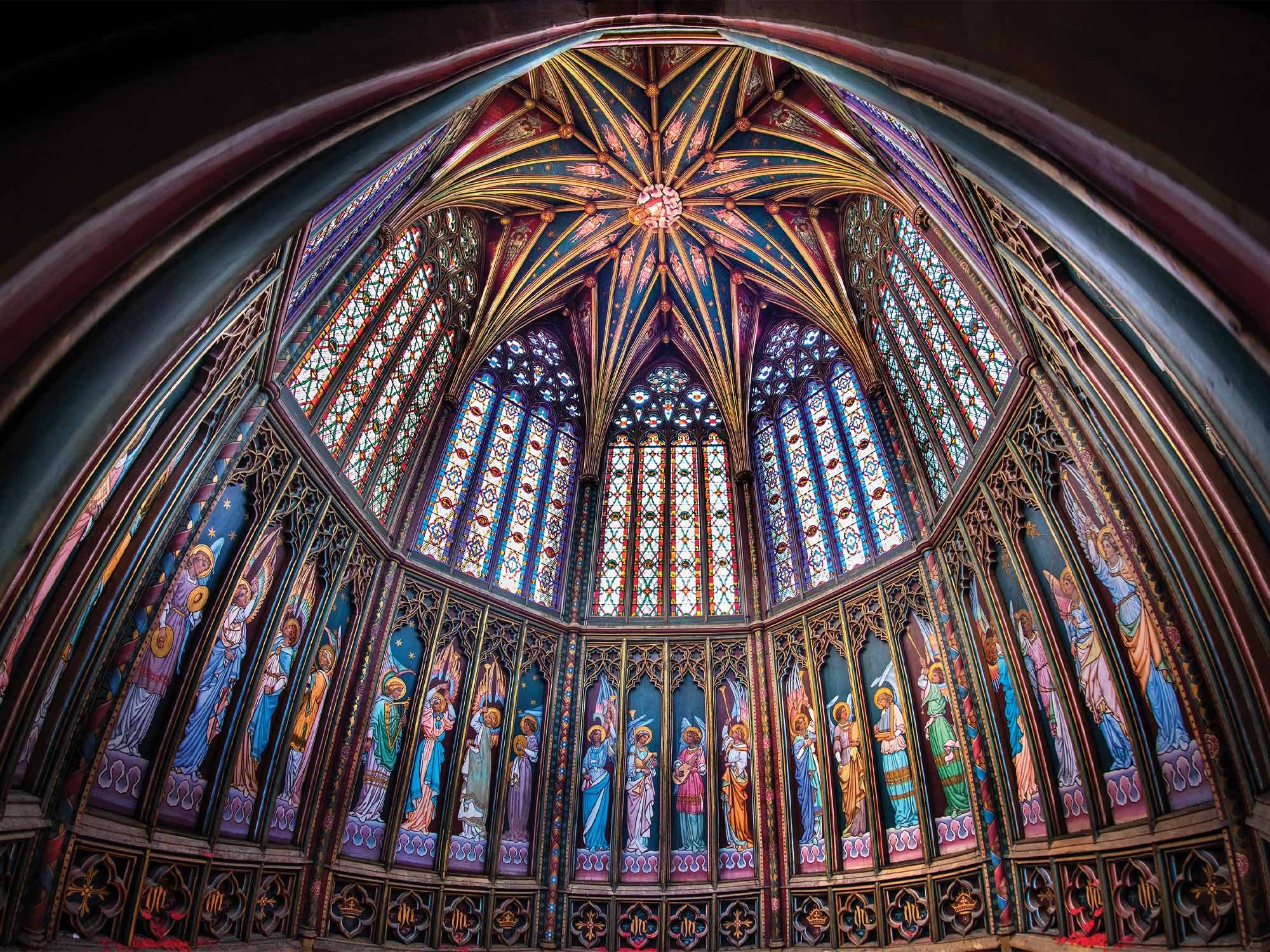
Wonder of the Medieval world
The Octagon Tower of Ely Cathedral is a masterpiece of engineering in timber, lead and stone that demonstrates how hope can overcome disaster
This breath-taking octagonal tower, built in the 14th century, sits at the centre of Ely Cathedral, a feast of visual delight. Eight huge stone columns frame the space, stretching over 30 meters up. Higher still, the famed Ely Cathedral Lantern shines above, with eight intricate stained-glass windows encircling a panelled wood ceiling, painted in bright colours and forming an eight-point star overhead.
At the very central point of this celestial ceiling - one of the largest in the country - Christ is depicted emerging from clouds, surrounded by an angelic host of angels in a rich starry sky. And all this suspended over 40 metres above ground level.
But the beauty of Ely’s Lantern and Octagon Tower rises quite literally from dust, as it replaces an original square Norman tower built in 1083 that collapsed 700 years ago.
The original tower fell when work on the Lady Chapel, a newer edition to Ely Cathedral started in 1321. Deep foundations were dug for the heavy buttresses that would hold the Lady Chapel together, but unfortunately these disturbed the water table. The sandy soil that the cathedral rested on dried out, losing its strength and causing the tower to begin to collapse.
One year later, in February 1322, the original tower came crashing to the ground, to the great shock of the monks in residence. Not only was an enormous hole left in the heart of this towering cathedral, but a large part of the choir was also destroyed as it fell. “From outside, you can see how far the destruction went,” explains Tower Guide, John Webster. “The first three windows of the main building are now in a decorated Gothic style, which is different to the next six formed in a much simpler original design from the 1200s.”
The construction of the Octagon Tower and Lantern is incredible. Very little is recorded about the build process, there are no architect’s drawings or plans, but this masterpiece of engineering is impressive even by today’s standards.
Firmer foundations were found by stepping one arch back from original square tower, forming the octagon shape. The stonework rises up, now finished with decorative balustrading at the edge of the parapet with intricate pinnacles at the top of each column. “These external decorative touches are not original,” describes John, “but were added by Victorian architect George Gilbert Scott when he spent some time here in the 1850s.”
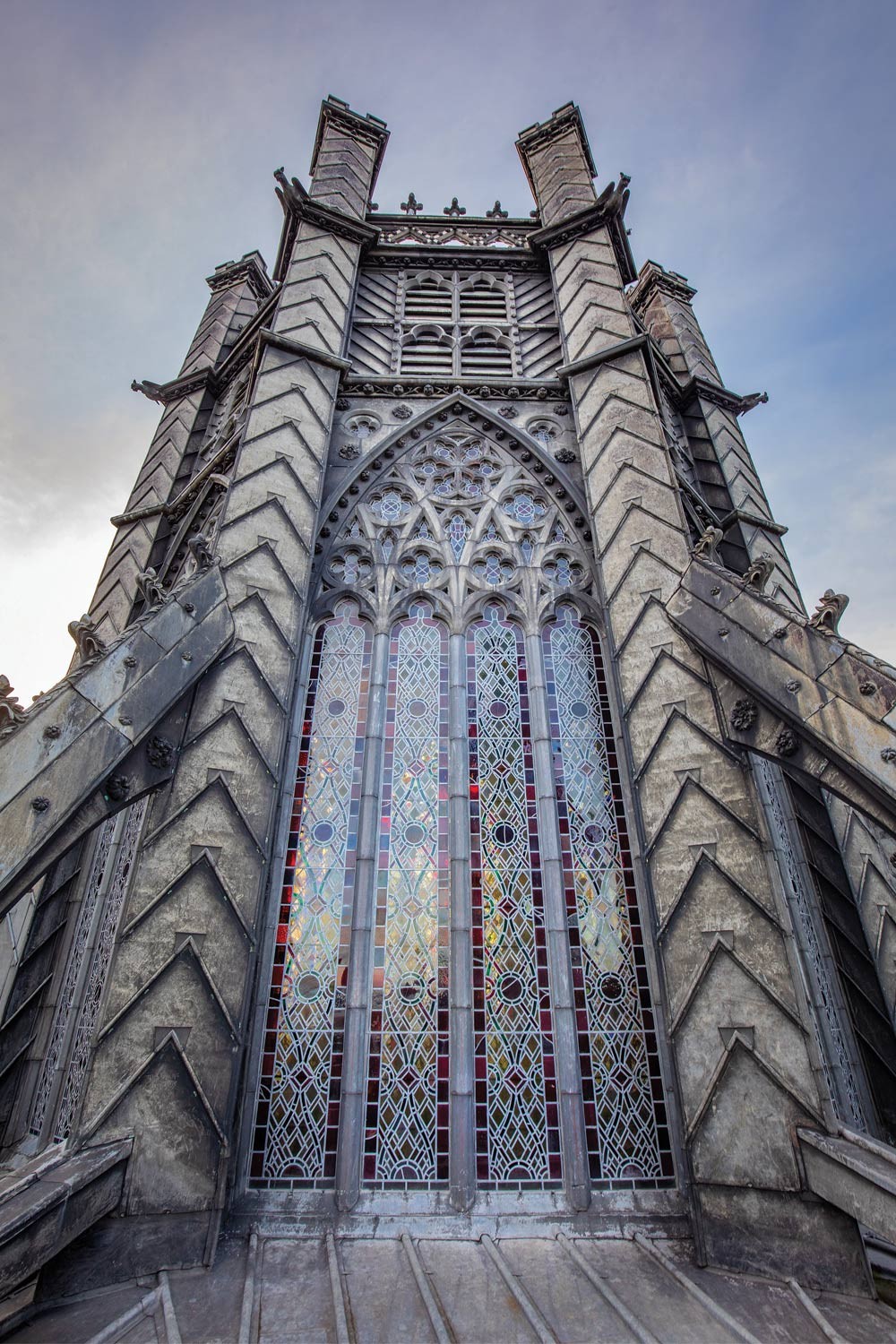
The Lantern sits within the Octagon, built entirely from wood and weatherproofed with lead, because the width of the new tower would have been too wide to support a more conventional stone vault. A tour inside the walls of the Octagon, up tightly twisted spiral staircases and through a tiny wooden door, allows the engineering of the Lantern’s timber structure to be fully admired.
Eight principal posts made from English oak rise up 20 metres, supported originally by eight pairs of timber buttresses sitting in niches in the stone walls. A large number of supporting beams were added by James Essex in the mid-1700s when rot was discovered in the original supporting beams.
“The medieval builders first built the timber structure on the ground,” says John. “Once they were certain it all fitted perfectly together they built a great gantry off the stonework which provided a central winching point to pull the timbers the 30 metres up. It took roughly seven years to build just the Lantern, using 200 tonnes of wood and 200 tonnes of lead, all still suspended there today.”
The internal boarding of the Lantern is reported to be recorded in the monks purchase ledger as ‘best pine from King’s Lynn’ and is still all the original wood. Grand panels around the sides of the Lantern can be opened to look down into the cathedral below. The panels are painted inside with angels each holding a musical instrument, while the backs of each are scribed with names, from workmen to servicemen, throughout the cathedral’s long history. “Looking down into the cathedral from such an impressive height is really a fabulous view that visitors love,” says John.
Another spiral staircase leads up to the Octagon rooftop, over 35 metres above ground. The view from the top is extraordinary, stretching for miles across the unique fenland landscape. In the distance, you can see Thetford Forest, Newmarket Heath and Cambridge on the horizon. On a clear day the view stretches all the way to Royston Hill 25 miles away. When Ely cathedral was built, it sat on an island just two miles across at its widest point and surrounded by water. It is easy to see why it became known as ‘The Ship of the Fens’.
“The immensity and scale of the cathedral is what gives every visitor a ‘wow’ experience,” explains John. “There is an ever-changing atmosphere here and you really feel the weight of history all around you. I love Ely Cathedral most because of what it stands for. It is a place of comfort and hope here today as it was nearly a thousand years ago.”
